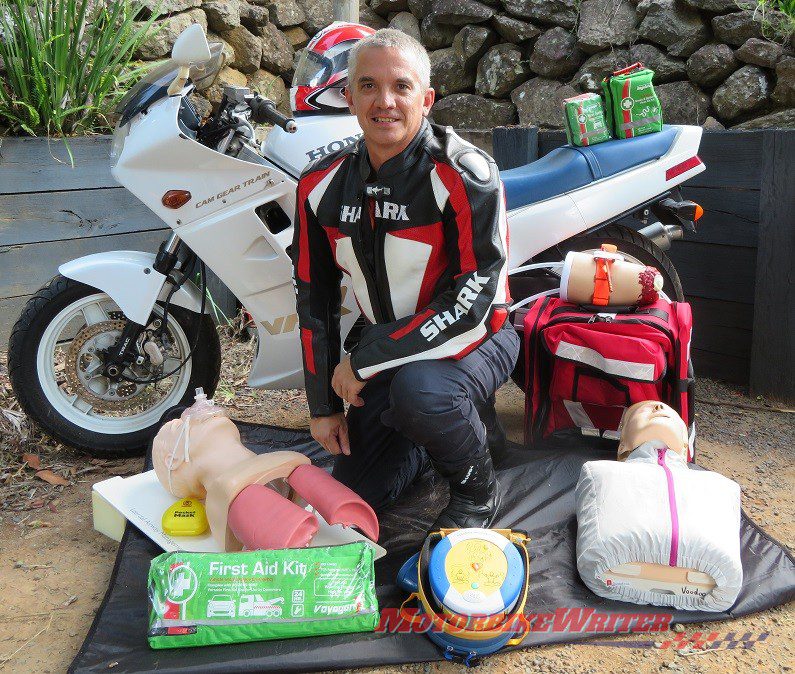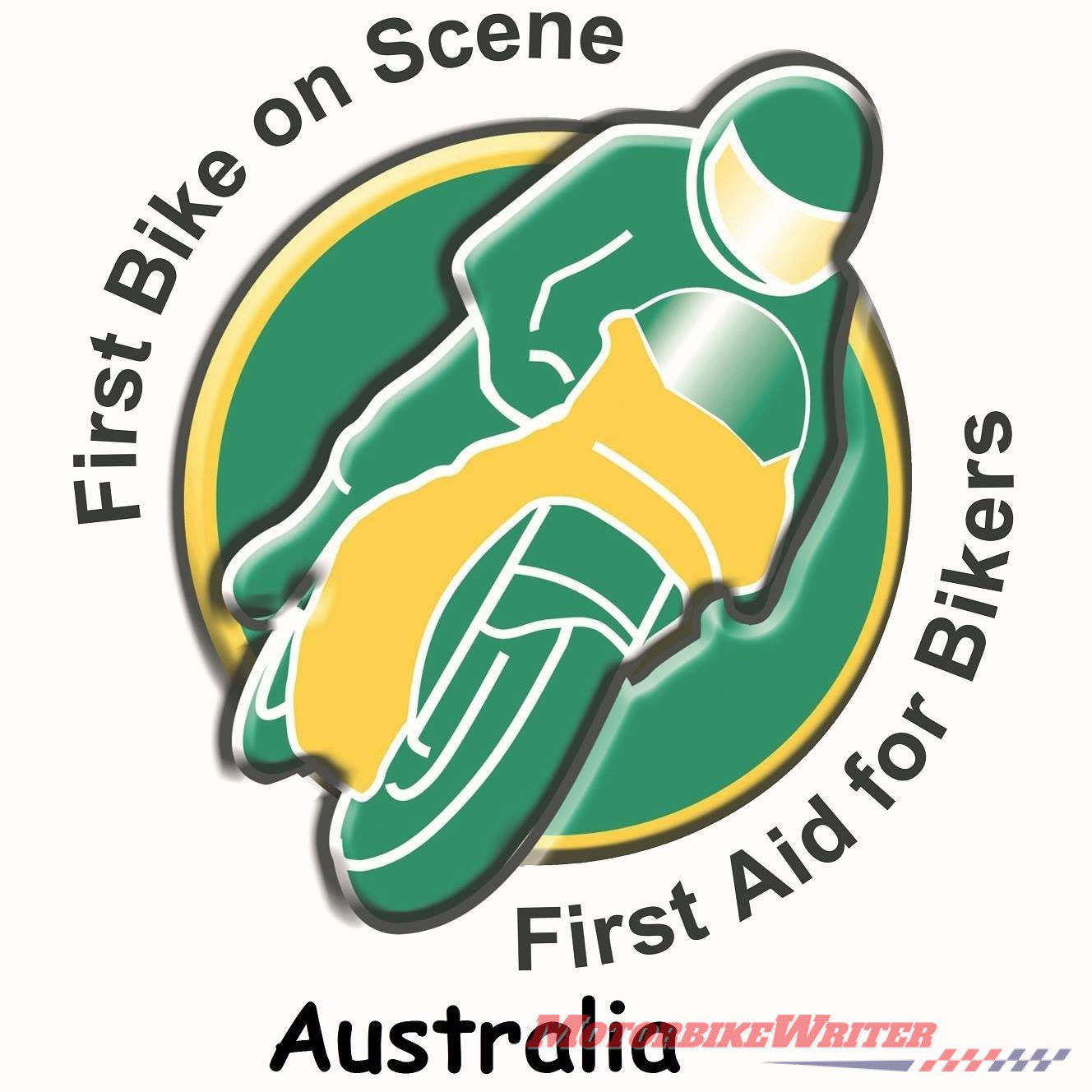Crash witnesses are sometimes too scared of being sued to provide first-aid or assistance to crashed riders, says paramedic Michael Beak of First Bike on the Scene Australia.
“There is a lot of misinformation about the legalities of helping a crash victim on social media,” he says.
“I put in a lot of effort to reassure people during my courses that the chances of being sued is virtually zero.”
Click here for more information on this legal issue.
First Bike on the Scene
The First Bike on Scene course was originally developed by Paramedics working in the North West Ambulance Service (UK) in 2003/4.
“Due to the nature of their work and being bikers themselves, they realised the need for a medical emergency care course appropriate to the needs of injured motorcyclists,” Michael says.
He is now offering the course in Australia and is looking for like-minded paramedics to join him.
“What’s different about First Bike on Scene is that emergency response skills are delivered by registered operational paramedics only,” he says.
“So students are taught skills that are evidence-based medicine, world’s best practice and comply with Australian Resuscitation Council (ARC) Guidelines.
“Paramedics are the experts in pre-hospital emergency care. It’s what they train for, it’s what they do for the duration of their operational career.”
Paramedic background
Michael is a Mt Tamborine resident, Army Reserve medic of 10 years, Honda FVR750 rider and operational paramedic for 25 years.
He has been teaching first-aid for almost 30 years and started a first-aid training business (www.surefirefirstaid.com.au) eight years ago.
“Unfortunately, I have attended my fair share of motorcycle-related incidents,” he says.
Michael raced 250cc production and historic motorbikes in the late 1980s when he was a teenager and worked in Phil Beaumont’s motorcycle shop in Newstead, Brisbane.
“I was like a kid in a candy shop,” he says.
“I’ve crashed and broken a lot of bones in my years of riding, but when I broke my collar bone five years ago at walking pace on my Honda XR250 at a motocross park I was off work for 10 weeks and decided I needed a back-up plan.
“That’s when I decided to launch my own first-aid training centre and First Bike on the Scene is one of my specialty divisions.”
He says the courses are open to all riders and cost from $85 for the stand-alone course up to more advanced courses.
They will be launched in South East Queensland with the intention of spreading around the nation as registered paramedics are recruited.
The FBoS introductory course includes crash scene management, airway management, injury assessment, head and neck (c-spine) injury management, bleeding control, recognition of catastrophic bleeding, safe helmet removal in special circumstances, log roll and trauma CPR.
First responder tips for crashed riders
Michael says the most important feature of a first-care provider is that they take charge at a crash scene.
“Even if it’s ‘fake it until you make it’, you have to convince everyone present that you know what you are doing, be confident and, if necessary, even assertive. Then people are happy to follow,” he says.
“The other important thing is that they think about the danger of other traffic.
“There have been untold times I’ve been at a crash and you suddenly hear the locking up of brakes.
“A couple of times people have even skidded into emergency trucks. It’s like a moth to a light when they see the flashing lights. You go where you look.”
Q&A
Michael has offered to write about some hot topics involving crash scene management and crashed rider first-aid.
If you have any questions about how to manage a crash scene or help a crashed rider, please leave your query in the comments section below and he will respond.




